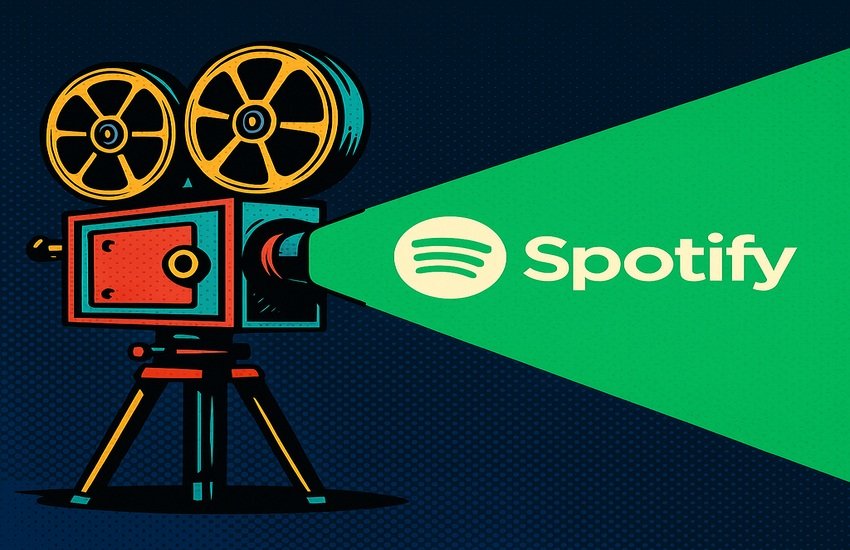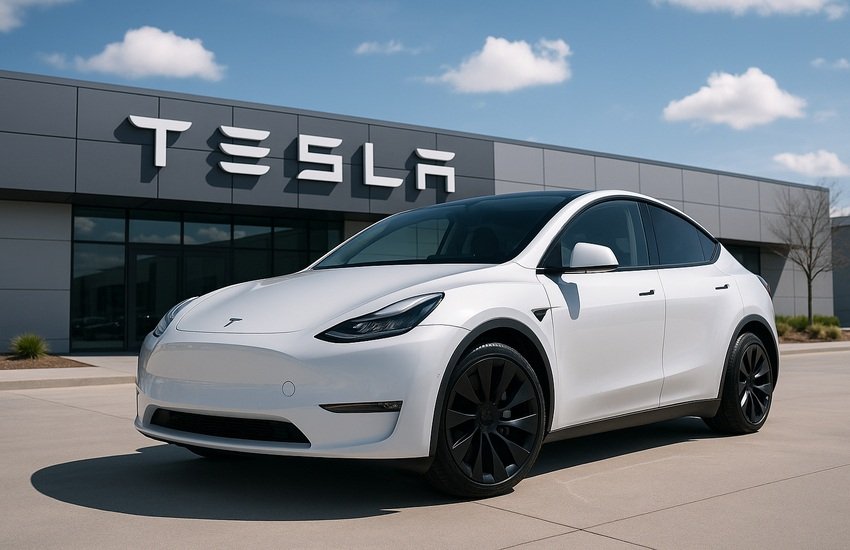Sign Up For Free To Keep Reading
Spotify’s decade-long battle with Apple over App Store fees has escalated into a defining global fight over mobile market power, and it’s showing signs of denting Apple’s dominance. The most recent development came from Spotify’s Q2 2025 earnings call, where CEO Daniel Ek directly credited the U.S. legal win against Apple in the Epic v. Apple case for improving Spotify’s subscription conversion rates. For years, Apple restricted developers from directing users to alternative payment options. But now, Spotify can communicate directly with lapsed subscribers and include a call-to-action in the app—a shift from previous limitations that forced users through email and web redirects. Spotify is also pushing regulators in Europe to enforce the Digital Markets Act (DMA) and the U.K.’s DMCC, which could dramatically reshape Apple’s mobile gatekeeping. As global scrutiny intensifies, Spotify is not only carving out more freedom for itself but also setting precedents that may benefit developers worldwide.
Regulatory Wins For Spotify
Spotify has consistently pursued regulatory and legal channels to push back against Apple’s App Store policies, particularly its 30% commission fee and restrictions on in-app communications. The most tangible recent win came from the aftermath of the Epic Games v. Apple lawsuit. Although Spotify wasn’t a litigant, it benefited from the ruling that now allows apps to inform users of alternative payment methods. Daniel Ek highlighted that Spotify is now able to re-engage users who let subscriptions lapse by providing direct prompts within the app—a fundamental change from earlier, where even notifying users about payment issues was restricted. In the European Union, Spotify has lobbied heavily for enforcement of the DMA, which aims to level the playing field between “gatekeepers” like Apple and smaller digital firms. The company hopes that these regulations will lead to more transparent and fair access to mobile platforms. While the DMA and DMCC are not yet fully enforced, Spotify has made its position clear in regulatory filings and amicus briefs, positioning itself as the leading voice of developer resistance. These efforts also align with Spotify’s broader monetization strategy, which now includes premium subscriptions, advertising, and à la carte offerings like audiobooks—a product expansion that would be hindered under legacy App Store rules. Spotify’s wins, though incremental, are reshaping the landscape for digital commerce and mobile software distribution, particularly in Western markets. It is also noteworthy that Spotify’s Board approved a $2 billion share buyback plan, partly as a signal of confidence in the long-term impact of these regulatory efforts.
Level Playing Field For Developers
Spotify’s aggressive stance against Apple isn’t just about its own bottom line; it’s about redefining the economics for all developers in the App Store ecosystem. Historically, Apple’s App Store model imposed strict limitations on how apps could communicate with users about payments, pricing, and subscriptions, effectively preventing direct marketing or customer retention initiatives within the app environment. Spotify has called this out as anti-competitive and has rallied other developers to the cause. As global legal and regulatory frameworks evolve, Spotify’s victories may pave the way for a more equitable app marketplace. With the U.S. courts opening the door to alternative payment communications and the European DMA potentially mandating even broader changes, smaller developers could soon find it easier to convert users, reduce churn, and expand monetization models. Spotify has already shown what’s possible: the ability to message lapsed subscribers has improved its conversion rates, according to management, and the company sees significant future potential in allowing à la carte transactions inside the app. These developments come as Spotify expands into new verticals including video podcasts, audiobooks, and even education—all areas that would benefit from transactional flexibility. Spotify’s willingness to challenge Apple head-on has also led to increased transparency across the app economy. Developers are watching closely as Spotify presses forward, often acting as a proxy in regulatory battles that could set legal precedent for decades. If successful, Spotify’s campaign may not just unlock new revenue for itself but also dismantle long-standing barriers that have constrained app innovation.
Apple’s Resilience
Despite Spotify’s legal and regulatory successes, Apple’s dominance remains robust, especially in developed markets. The iPhone ecosystem continues to command a loyal user base, and its App Store policies still control vast swathes of mobile commerce. While rulings in the U.S. and policy shifts in Europe have chipped away at Apple’s wall, they have not fundamentally altered the platform’s economics. Apple has historically been adept at adapting to regulatory changes without ceding too much ground—for example, by creating limited opt-outs or highly technical compliance pathways that meet legal standards without offering full openness. Moreover, Apple continues to monetize app store activity through tightly integrated services and hardware-software bundling that make it difficult for users to switch ecosystems. Spotify’s progress is also contingent on aggressive enforcement of new laws like the DMA and DMCC, both of which face delays and lobbying resistance. There is also a risk of backlash; if Apple responds by curbing certain developer privileges or raising user-facing costs, smaller developers might find themselves squeezed between platforms. Additionally, Apple is actively investing in its own content and services, including Apple Music, Apple TV+, and podcasting—areas that compete directly with Spotify. This horizontal integration ensures that Apple maintains leverage, even if it loses specific policy battles. So while Spotify’s fight has exposed cracks in the App Store’s armor, Apple’s resilience and deep user entrenchment mean the platform remains a formidable gatekeeper, even under heightened scrutiny.
AI & Market Uncertainty
Spotify’s battle with Apple is unfolding against a backdrop of rapid technological evolution and volatile market conditions. The rise of generative AI, for example, is both a challenge and an opportunity for Spotify. As Gustav Söderström explained during the Q2 2025 earnings call, Spotify is investing heavily in AI-powered features such as DJ, personalized playlists, and interactive user experiences that leverage real-time reasoning and conversational interfaces. These innovations require intensive compute power and add complexity to Spotify’s cost structure, creating uncertainty around long-term margins. Simultaneously, as programmatic advertising becomes more sophisticated, Spotify is working to accelerate adoption of its new ad tech stack—an area where execution has lagged behind expectations. The departure of Spotify’s Global Head of Sales, Lee Brown, underscores the internal recalibration taking place as the company aims to close its monetization gap. On the financial side, Spotify’s LTM valuation multiples have soared, with LTM EV/Revenue at 7.17x, LTM P/S at 7.44x, and LTM EV/EBITDA at 61.87x as of September 5, 2025. These elevated valuations reflect high growth expectations, particularly in a year when the company hit 696 million MAUs and 276 million subscribers. But they also introduce execution risk. If regulatory momentum slows, or if Apple successfully circumvents policy impacts, Spotify’s ability to maintain its premium valuation could be called into question. The AI-driven future and regulatory battles are inherently uncertain, and investors will need to evaluate whether Spotify’s strategic positioning justifies its current multiple expansion.
Key Takeaways
Spotify’s protracted battle against Apple has become a central narrative in the fight over mobile platform control, reshaping developer expectations and regulatory frameworks in key markets. Its recent gains—from improved subscription conversion post-Epic ruling in the U.S. to its central role in lobbying for the DMA and DMCC in Europe—have incrementally weakened Apple’s app monetization stronghold. However, Apple remains a resilient counterparty with deep ecosystem integration and proven adaptability to legal headwinds. Meanwhile, Spotify is not only navigating this external conflict but also a dynamic internal landscape shaped by AI investments, advertising strategy shifts, and product expansion. These initiatives, while potentially transformative, bring their own risks amid elevated expectations. With LTM valuation multiples climbing steeply (EV/Revenue at 7.17x, EV/EBITDA at 61.87x, and P/E at 156.27x), Spotify now trades at a premium to its historical norms and sector peers. The sustainability of these multiples will hinge on Spotify’s ability to convert regulatory wins into durable monetization while executing on its multi-format and AI-driven roadmap. The battle with Apple has opened doors, but the road to structural independence and profitability remains complex and closely watched.





